Build Architecture Landscapes
Build Architecture Landscapes
Prolaborate provides a powerful yet intuitive tool to build Architecture Landscapes based on Enterprise Architecture data in minutes.
With these powerful visualizations, you can present any kind of architectural views in a single page. Here is what you can do:
Quick Overview
For example, here we get a quick overview how L0, L1, and L2 business capabilities are inter-connected.
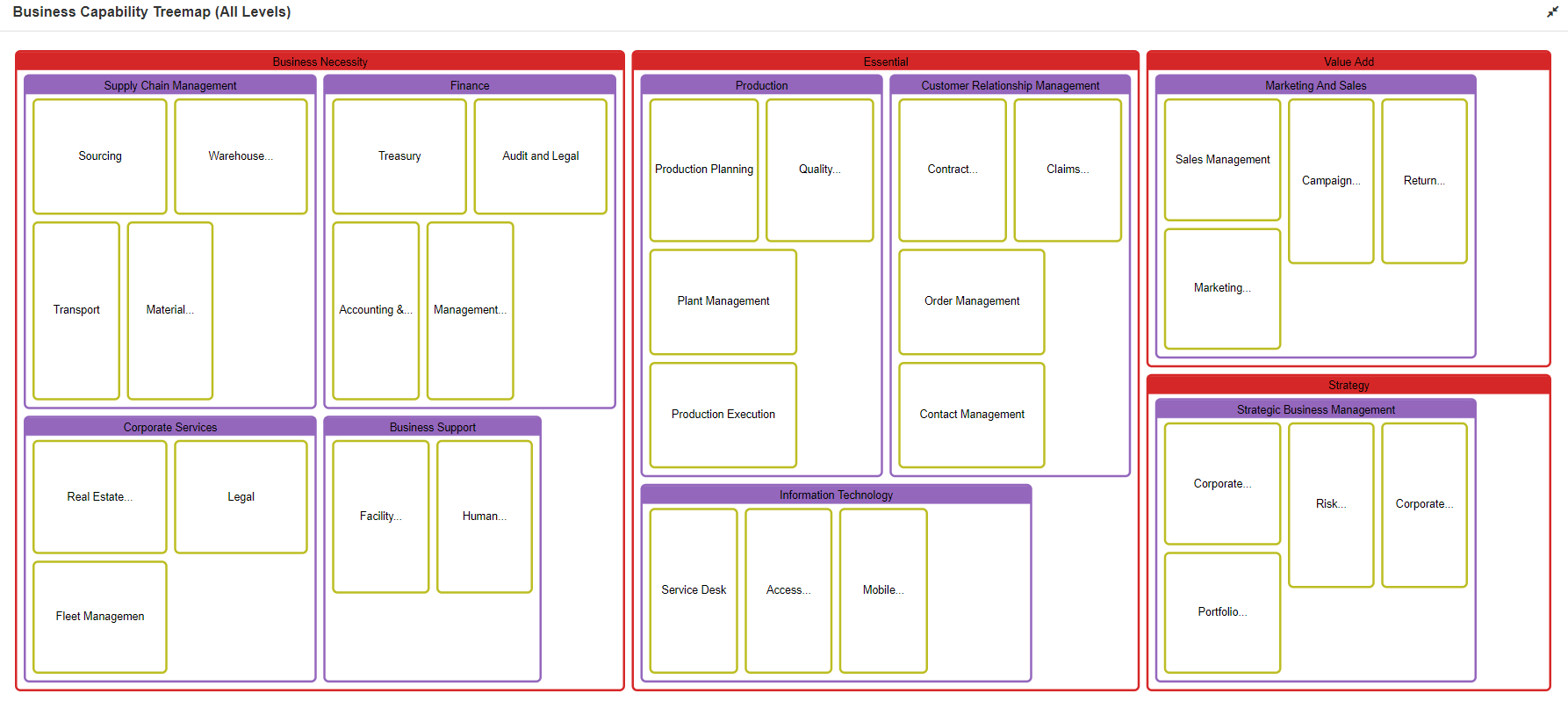
Highlight Metadata to enable decision making:
For example, we have color-coded the applications here based on their lifecycle stage.
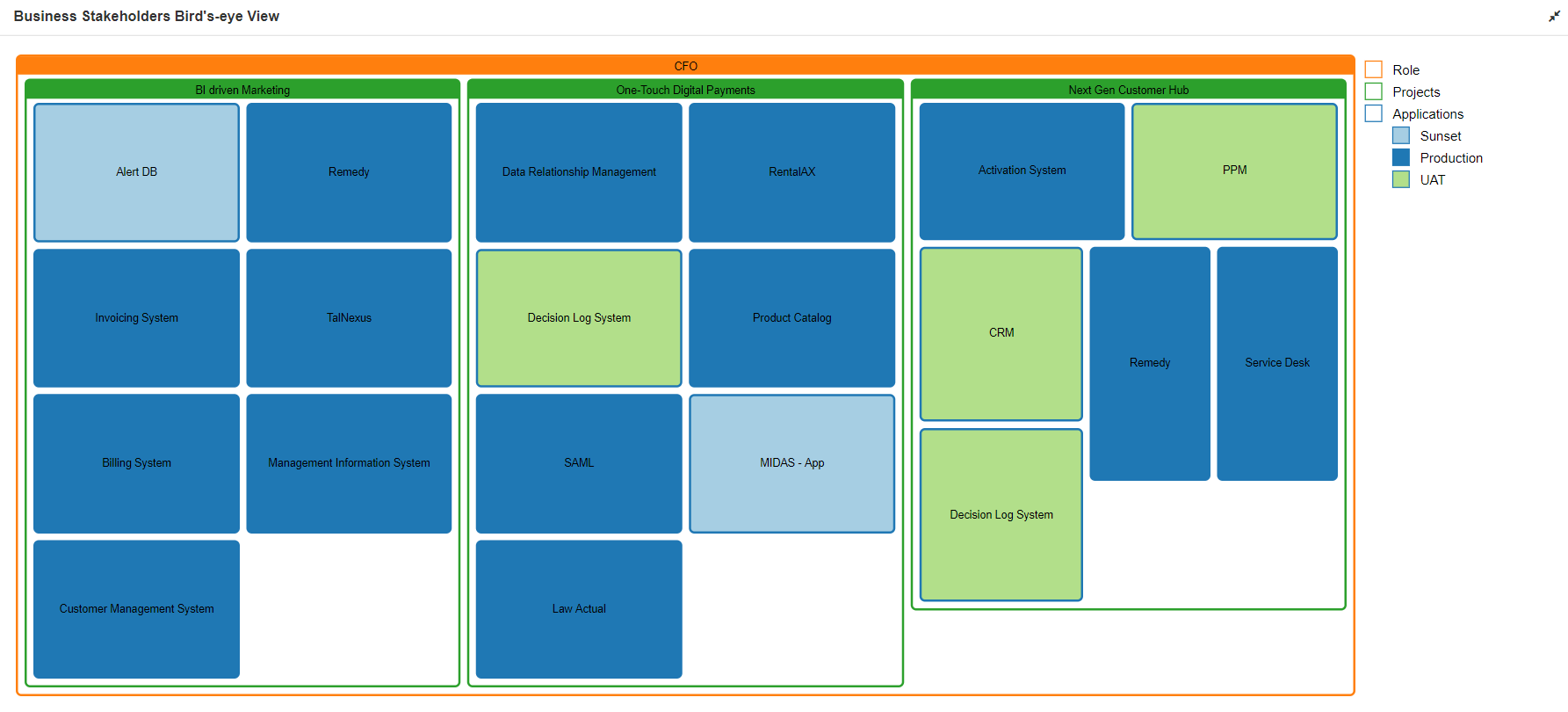
End to End Relationships:
For example, here we see how the following are interconnected – Roles, processes, applications, business activities, and requirements.
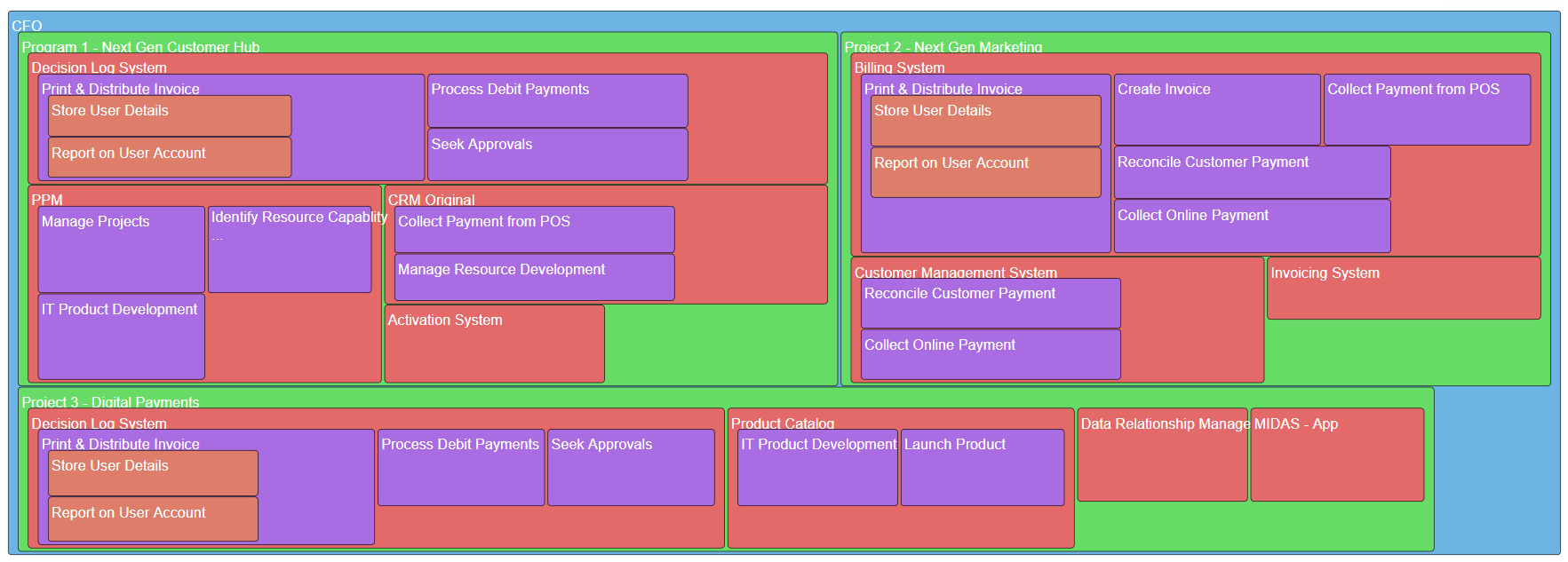
Note we will be looking only at the capabilities of chart widgets in this guide-; please refer to Dashboard Designer to learn about the general functionalities of the dashboard.
Build using Chart Designer
To create a Chart, click on Menu > Dashboards. Click on Add New to create a new dashboard or edit icon to edit a dashboard.
Click on Add Widget or Add icon on the bottom right to see the list of widgets. Click on EA Chart and then on Add New Widget.
Select Landscape and click on Designer.
Follow these steps to create the chart:
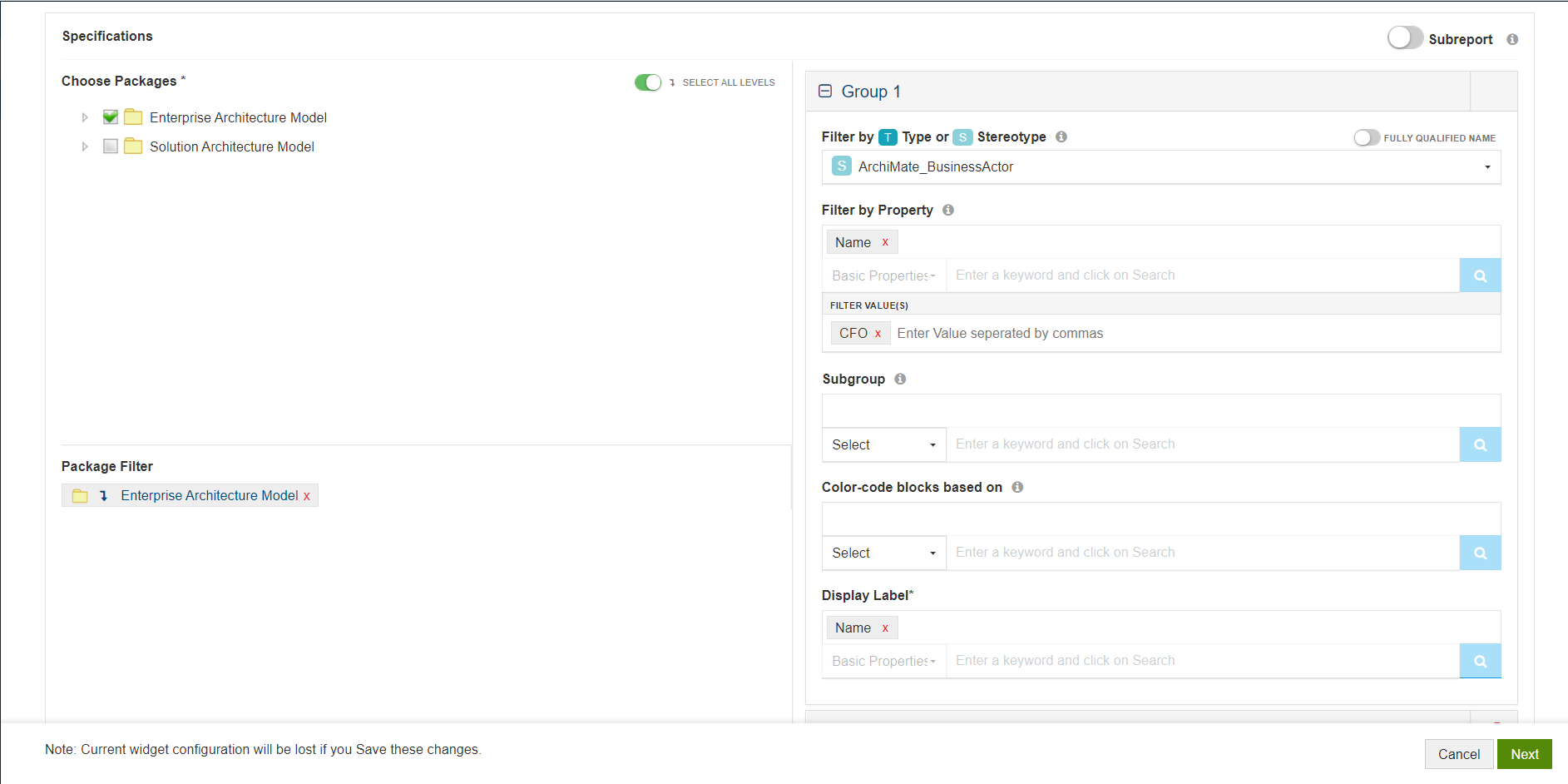
- Choose the packages that contain the data for your chart i.e., the packages that has the EA objects which should be considered for the chart.
- Filters:
- Specify the Type or Stereotype of elements that should be considered for the chart
- Specify a Property. Elements only with the specified property will be considered for the chart
- You can even specify particular values for the selected property. For example, consider only applications with Status as Production
- You can also
- group this selection if needed by specifying a property under Subgroup
- Color-code the box based on a property. For example, color-code box based on Priority – High. Medium, and Low. If you want to specify particular color based on priority (Say red for high, yellow for medium, and green for low), you can do it in the next step
- Choose the information you want to show on the chart using Display Label. Mostly, Name is used.
Repeat the following steps to add more levels/groups:
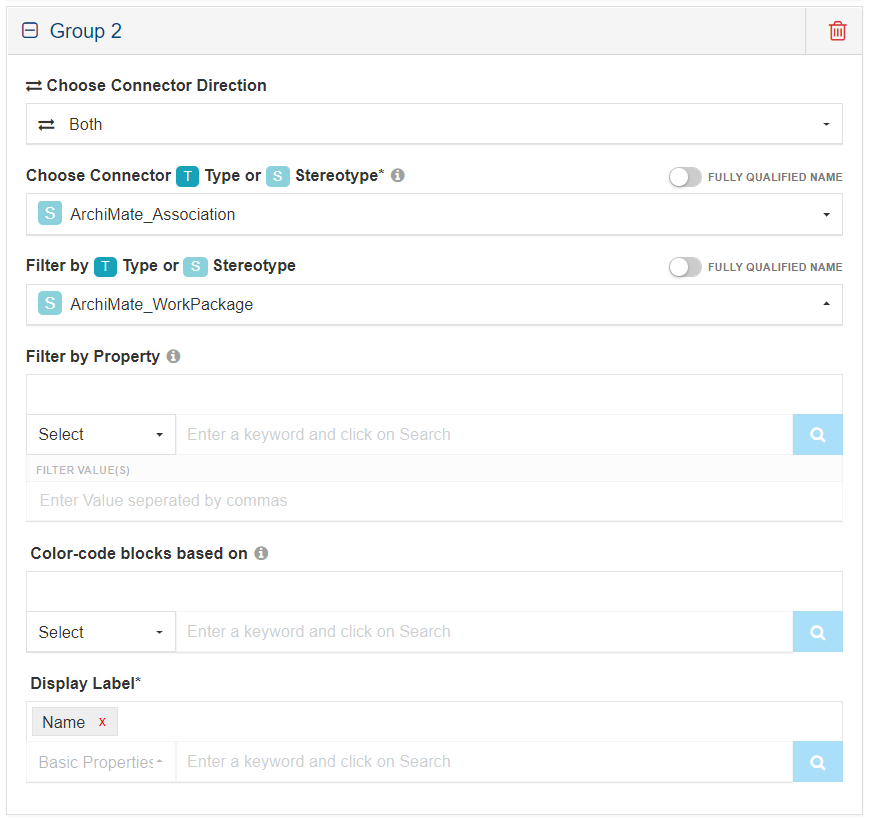
- Filters:
- Choose the direction of Connectors to be considered for this level
- Choose the type of relationship (Connector Type or Stereotype) between the elements you have chosen in the previous level with those you want to choose in this level
- Specify the Type or Stereotype of elements that should be considered in this level
- Specify a Property. Elements only with the specified property will be considered. You can even specify particular values for the selected property
- Color-code the box based on a property
- Choose the information you want to show on the chart in this level in Display Label
Sample Configuration and Result:
Configuration – Level 1:
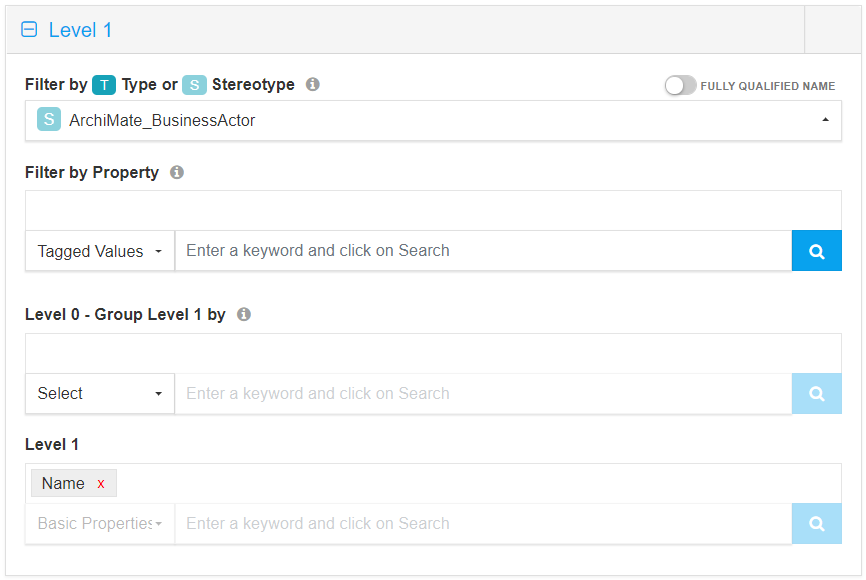
Result – Level 1:
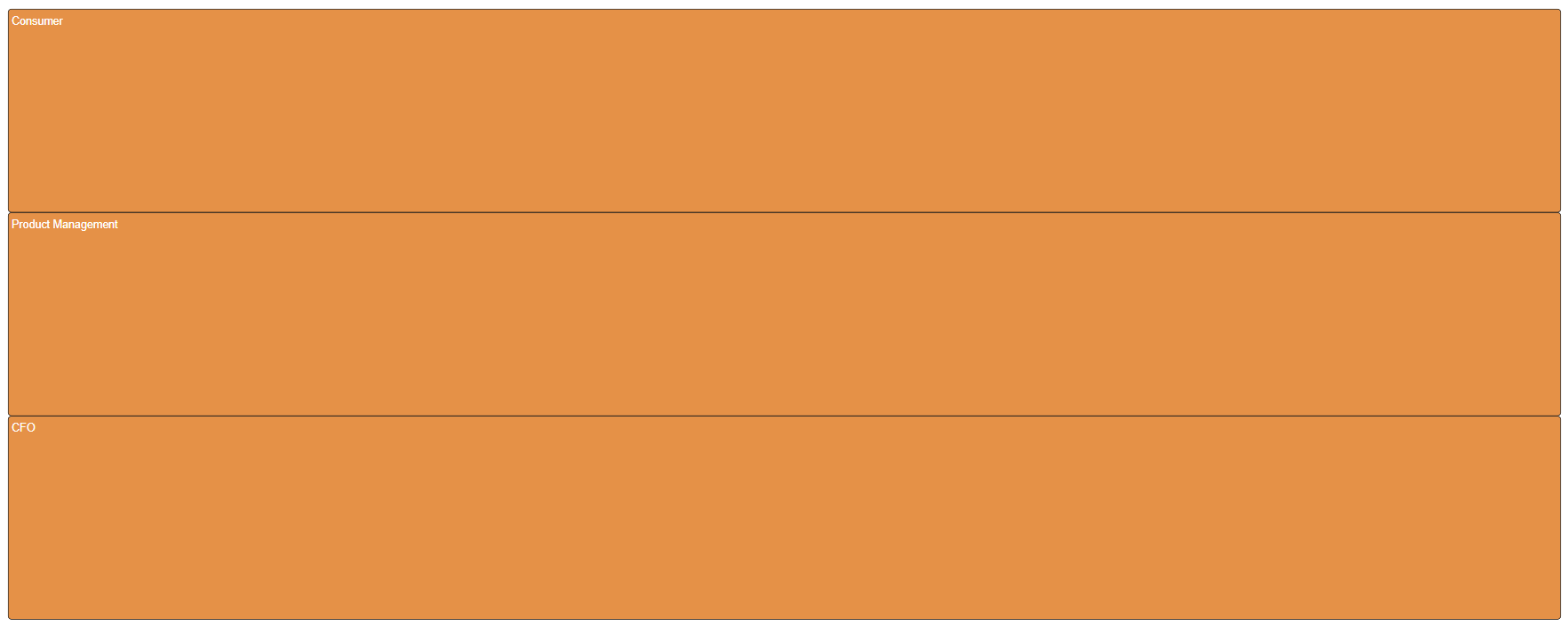
Add Level 2:
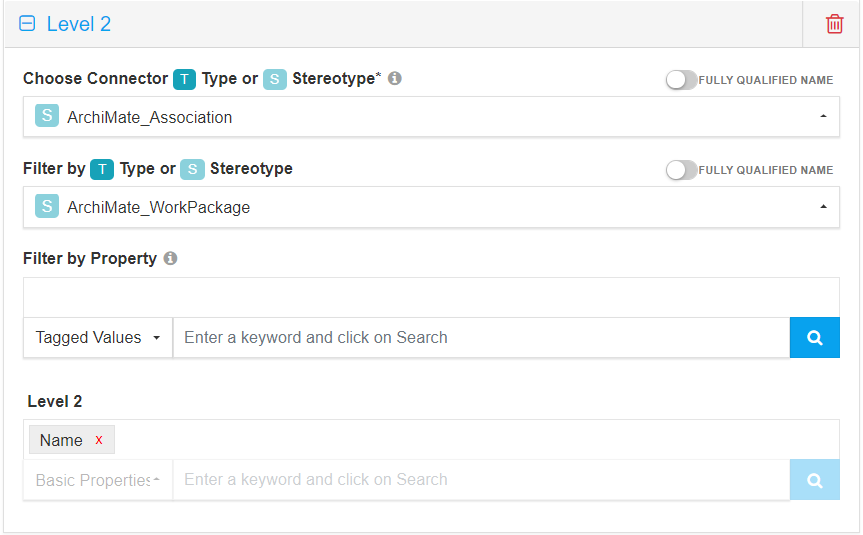
Result – Level 2:
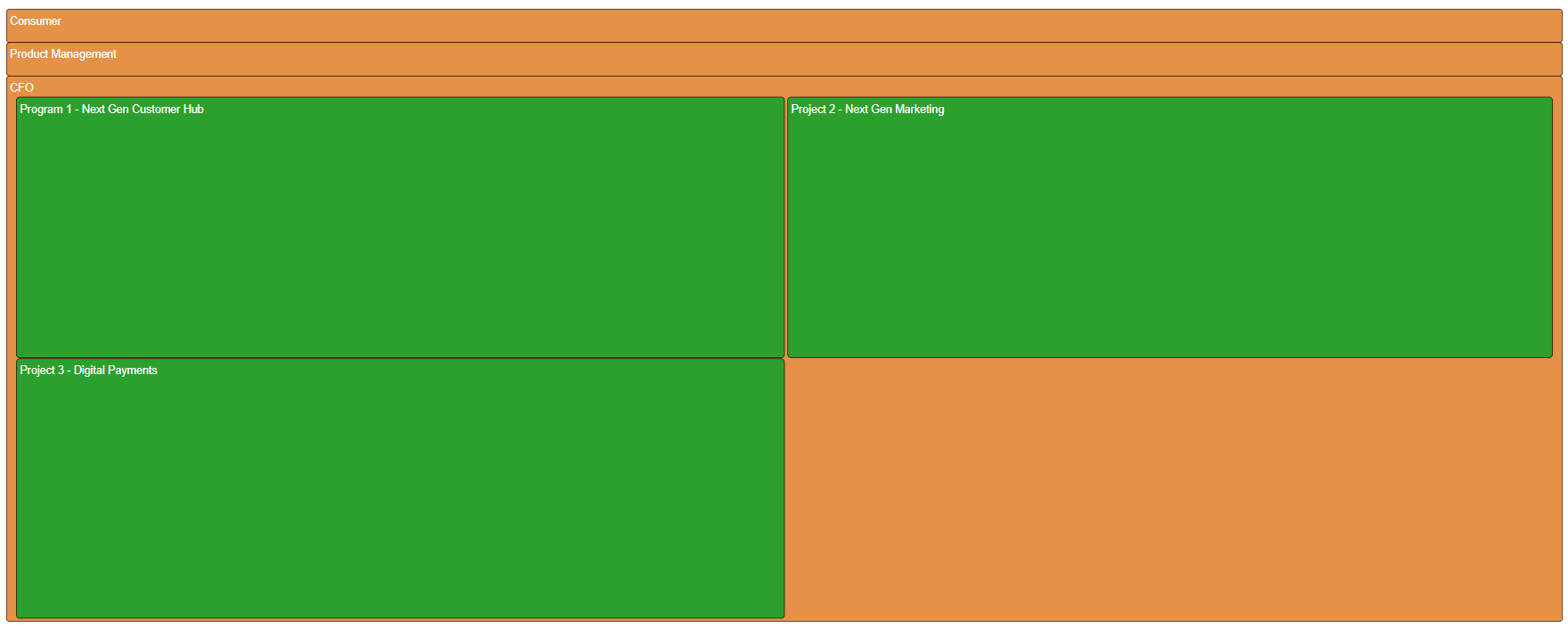
Add Level 3:
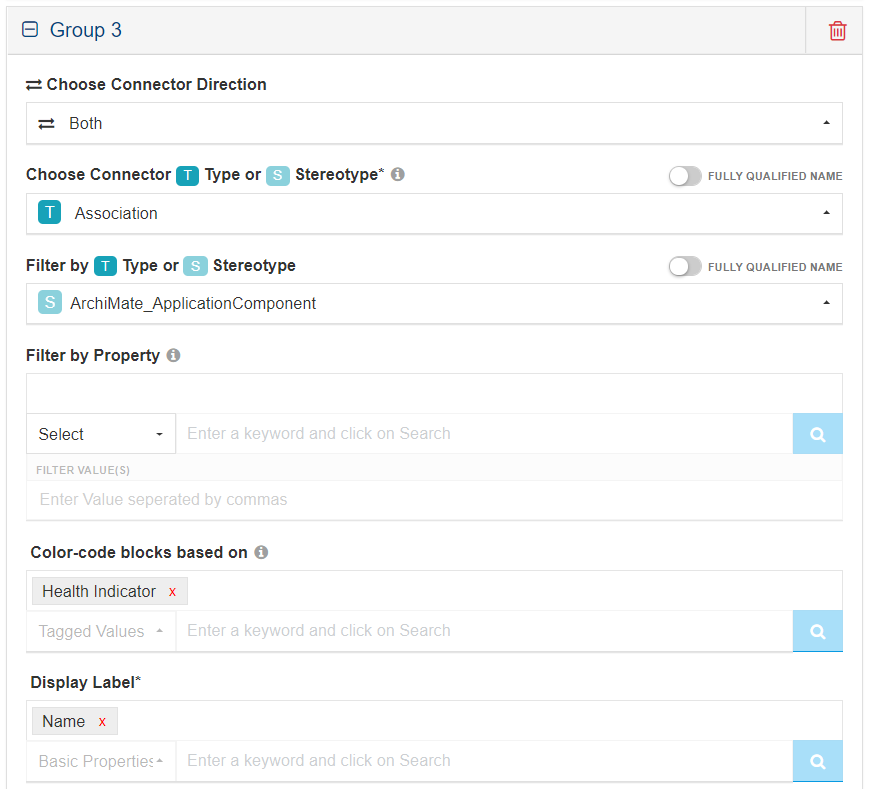
Result – Level 3:
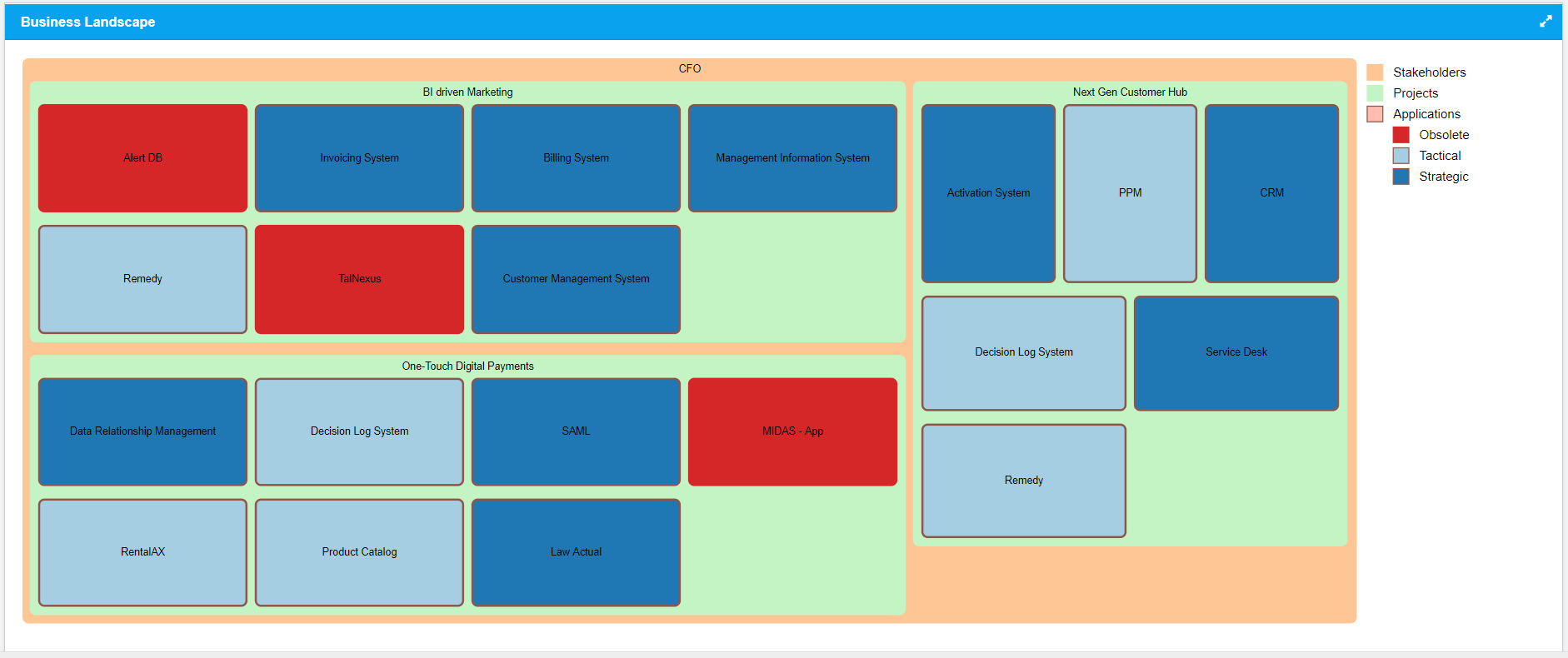
Add Level 4:
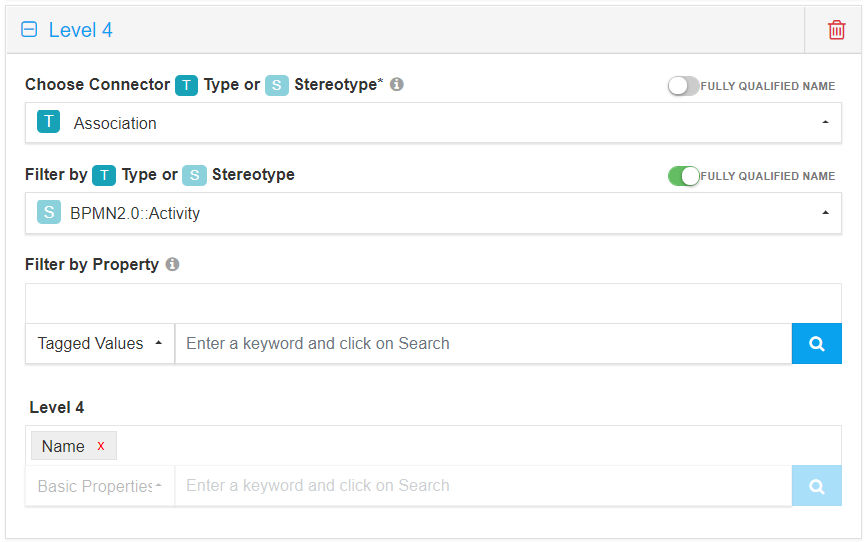
Result – Level 4:
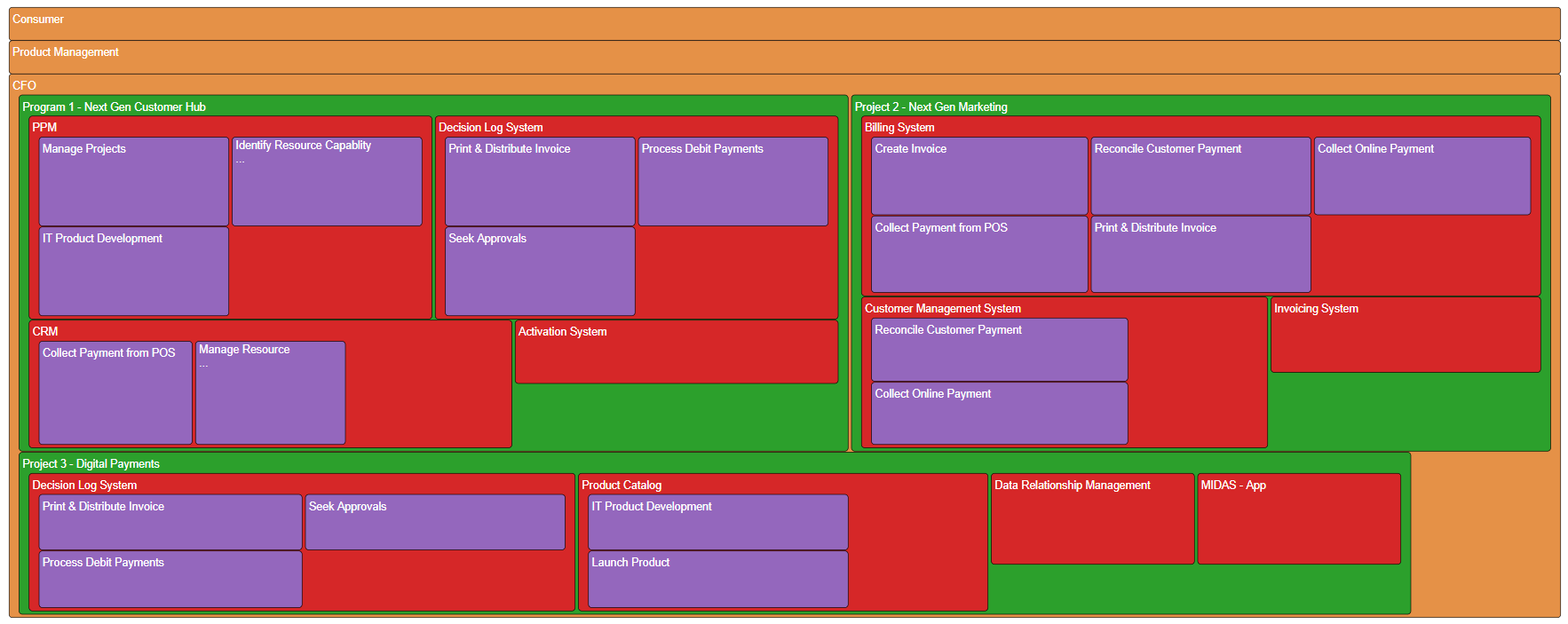
Add Level 5:
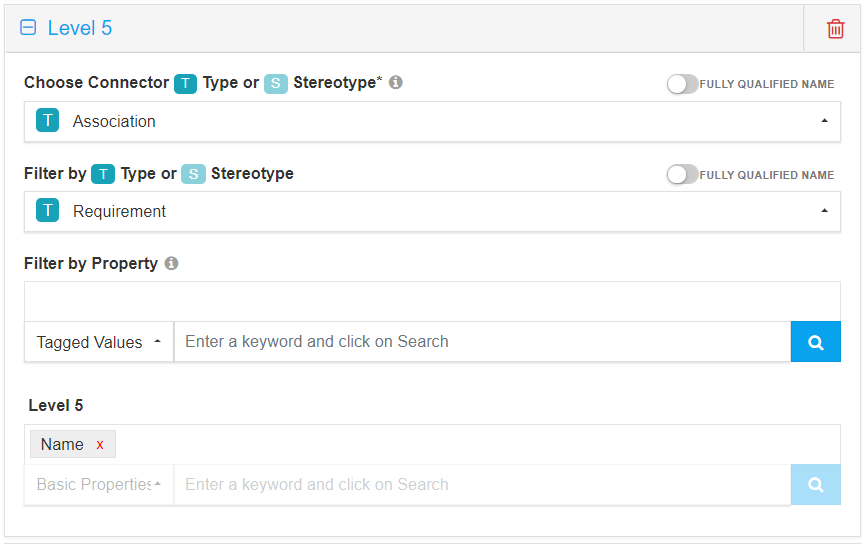
Result – Level 5:
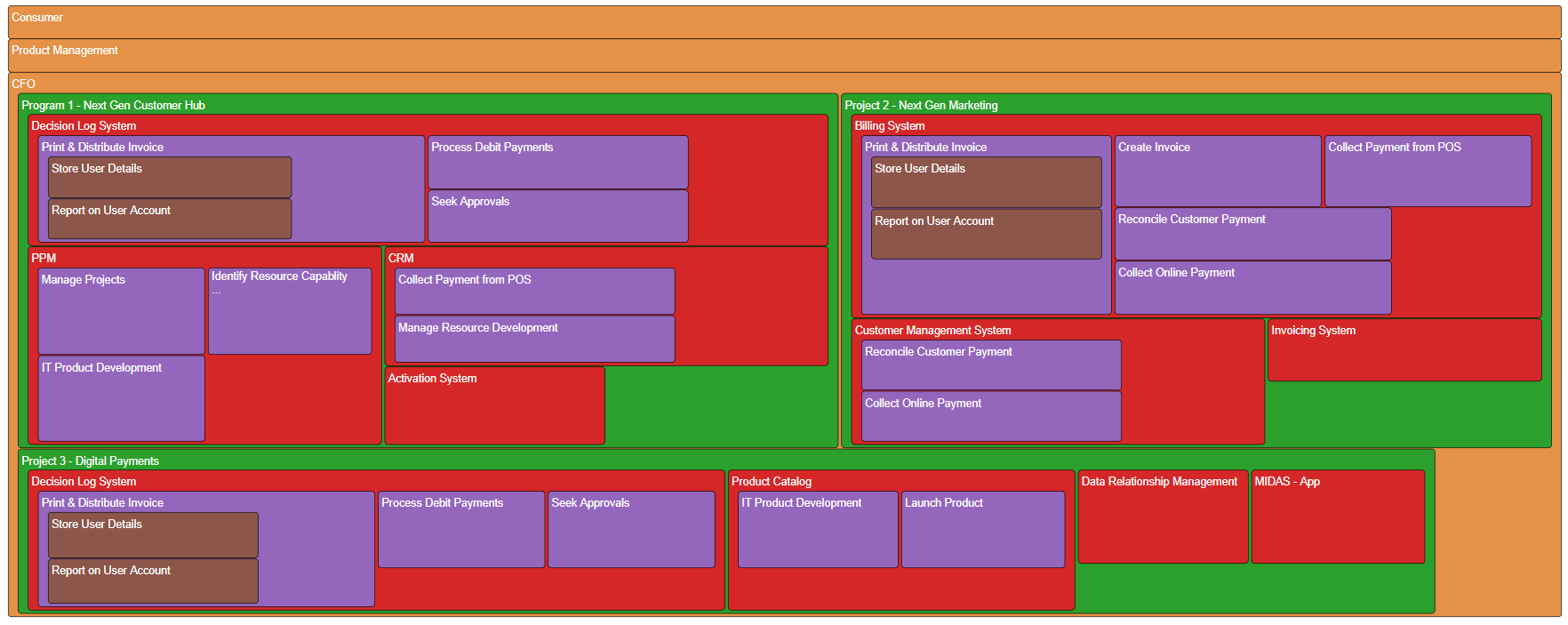
Build using SQL Queries
When you are building advanced charts using SQL queries, Chart query is used to build the charts and Result query is used to show in-depth information on click.
This chart will be created based on the property you define using the Series alias. Optionally you can group them using groupname alias.
As this is a multi-level chart, you can have many levels of Chart query and result query. You can click on List View to see the table view similar to the ones shown in above samples.
And to link one level to the another, you need to use the following syntax:
level[number].[alias of the property used in it] = level[number].[alias of the property using in it]
For example,
level2.ObjectID = level1.startelementid
To enable users to see in-depth information on click of a section of the chart, Aliases in Chart query need to be used in Result Query.
For example, if chart query is
select object_type as series from t_object
the respective result query will be
select name, object_type, stereotype where object_type = ‘’
Additionally, you can use the following aliases in Result query:
a. Add alias “classguid” to the GUID – to see details of an item on click, For example:
select name,ea_guid as classguid from t_object where object_type = ‘’
b. Add aliases – Base Type and Stereotype to Type and Stereotype respectivelyto see appropriate EA icons, For example:
select name, object_type as basetype, stereotype as stereotype from t_object where object_type = ‘’ and stereotype= ‘’
c. Prefix an alias with “hide_” to not see a column even when used in the query. For example, the following query will give the same result as above, but Base Type and Stereotype columns will not be shown in the result:
select name, object_type as hide_basetype, stereotype as hide_stereotype from t_object where object_type = ‘’ and stereotype= ‘’
Aliases should not contain any space.
Sample Queries and Results
Chart Query – Level 1:
select target.Object_ID as startelementid, source.Name as GroupName, target.Name as Series from ((t_object source left join t_connector con on con.Start_Object_ID = source.Object_ID) join t_object target on target.Object_ID = con.End_Object_ID) where source.Stereotype='ArchiMate_BusinessActor' and target.Stereotype='ArchiMate_WorkPackage'
Chart Shown in Dashboard
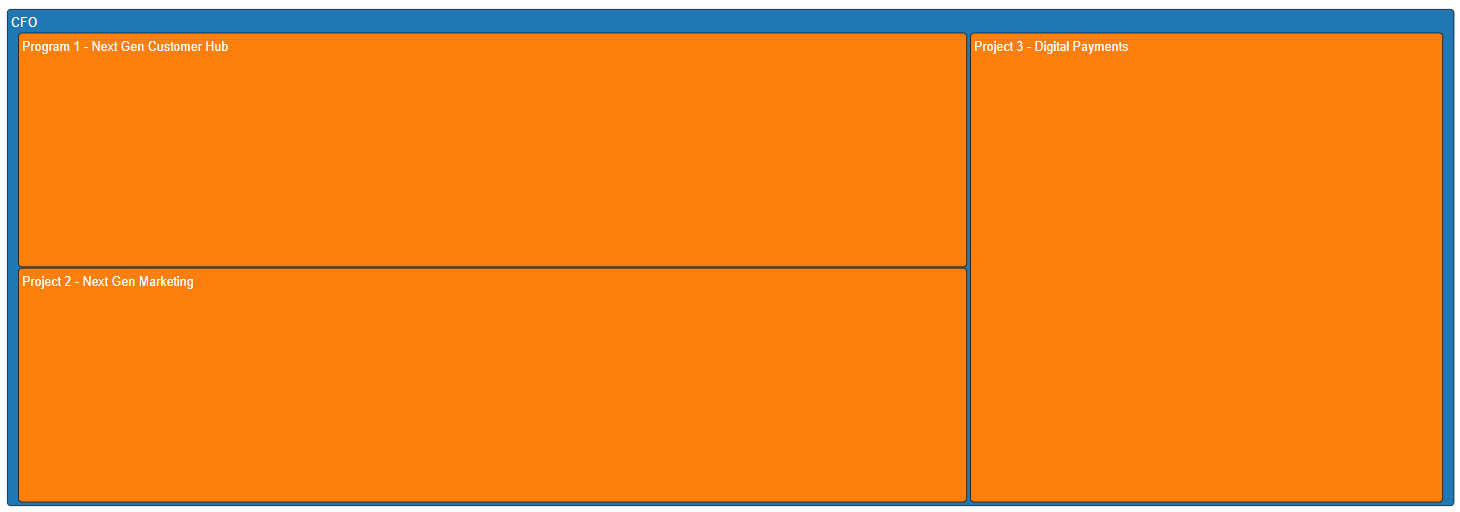
Add Level 2:
select target.Object_ID as startelementid, source.Name as GroupName, op.Value as Series, source.Object_ID as ObjectID from (((t_object source left join t_connector con on con.Start_Object_ID = source.Object_ID) join t_object target on target.Object_ID = con.End_Object_ID) left join t_objectproperties op on op.Object_ID=target.Object_ID) where source.Stereotype='ArchiMate_WorkPackage' and target.Stereotype='ArchiMate_ApplicationComponent' and op.Property = 'Health Indicator'
Condition to link to Previous Level:
level2.ObjectID = level1.startelementid
Chart Shown in Dashboard
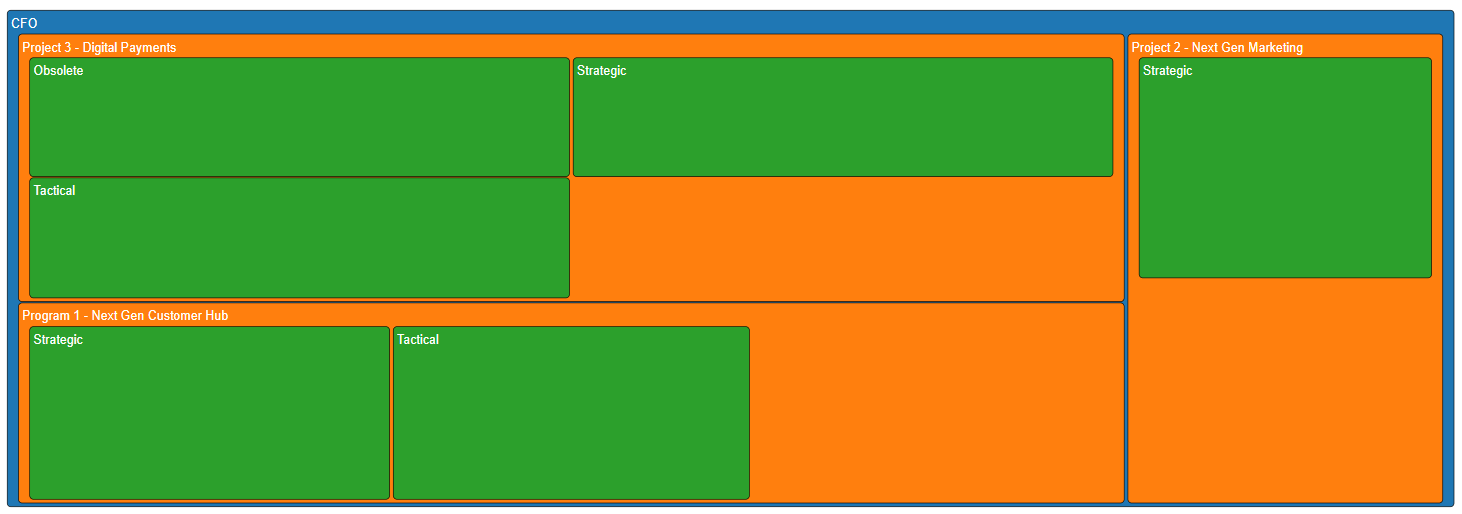
Add Level 3:
select source.Object_ID as startelementid, source.Name as Series, op.Value as GroupName from (t_object source join t_objectproperties op on op.Object_ID=source.Object_ID) where op.Property = 'Health Indicator'
Condition to link to Previous Level:
level3.GroupName = level2.series
Chart Shown in Dashboard
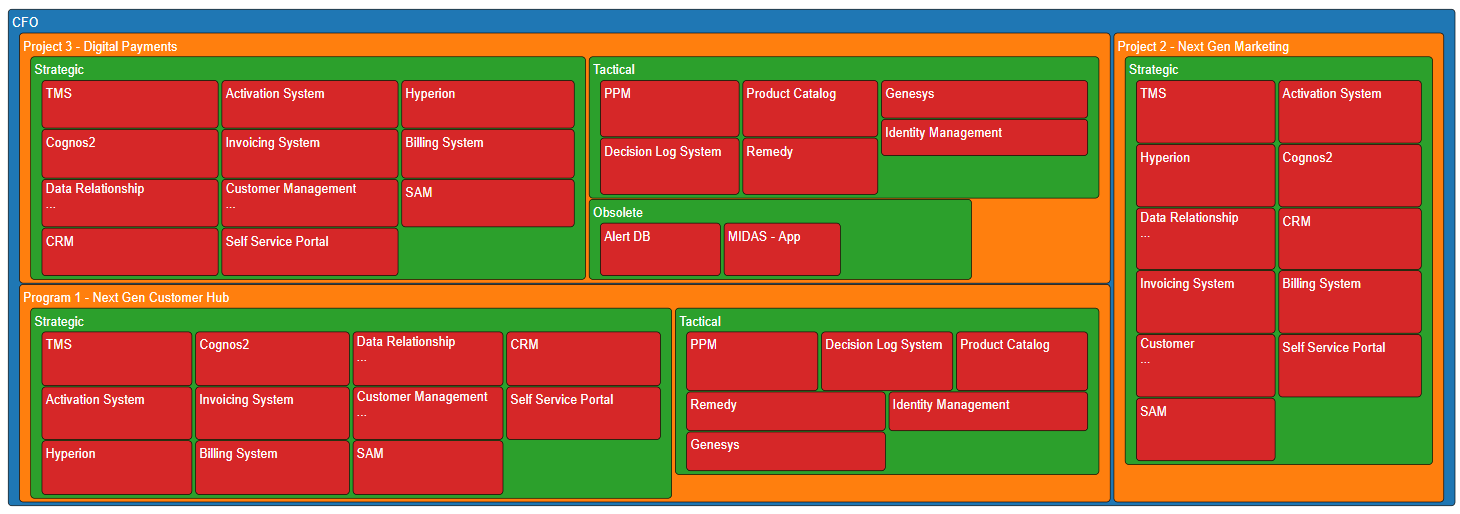
Add Level 4:
select source.Name as GroupName, target.Name as Series, source.Object_ID as ObjectID from ((t_object source left join t_connector con on con.Start_Object_ID = source.Object_ID) join t_object target on target.Object_ID = con.End_Object_ID) where target.Stereotype='Activity'
Condition to link to Previous Level:
level4.ObjectID=level3.startelementid
Chart Shown in Dashboard
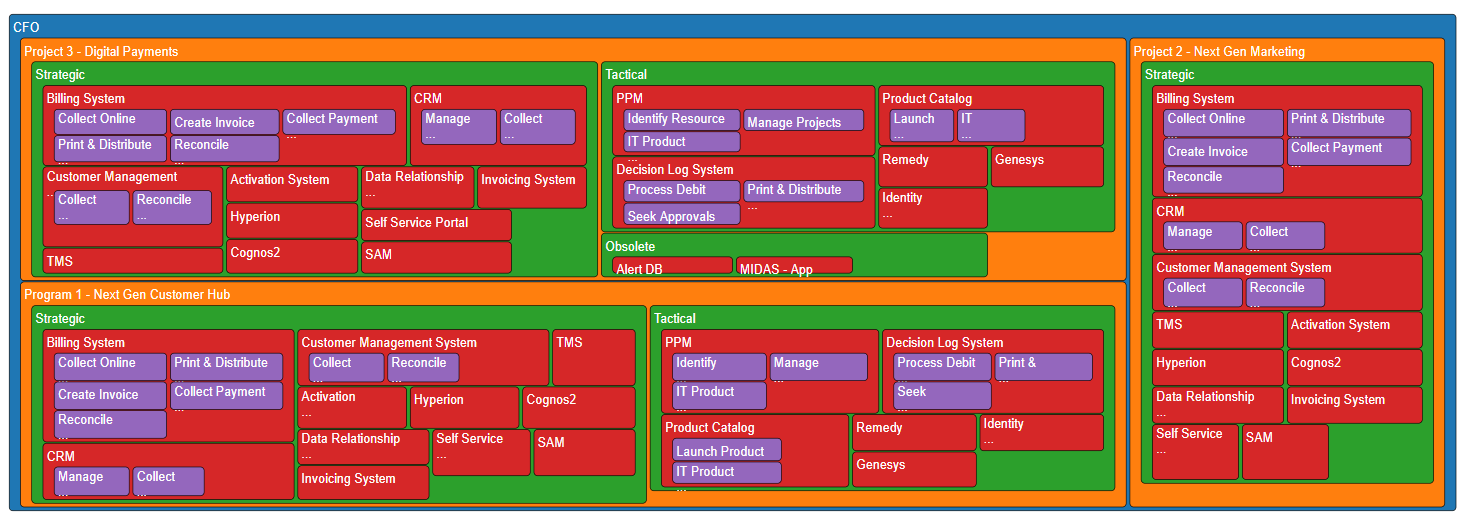
Customization Options
The following settings are available:
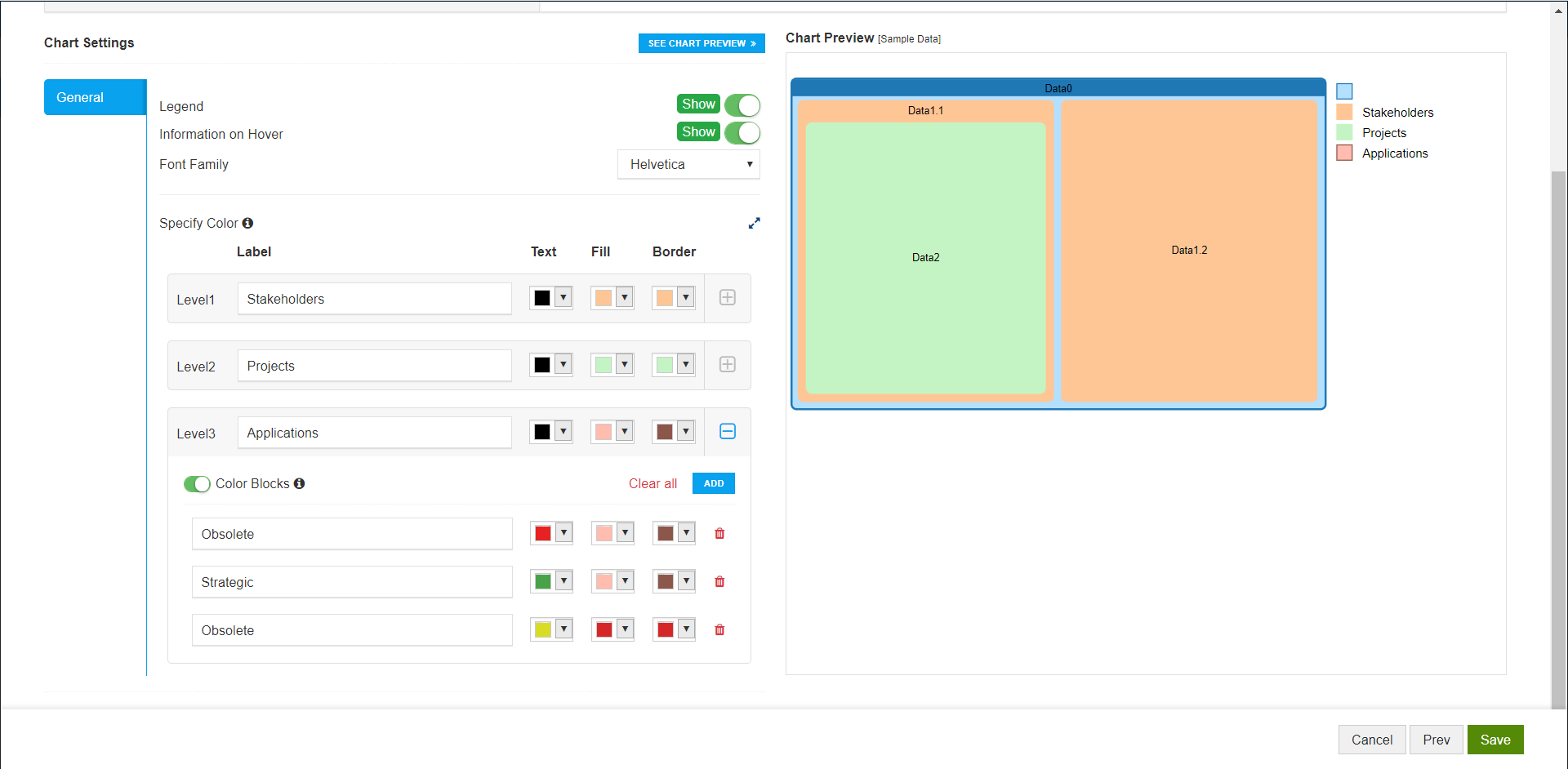
- Legend – Disable to hide the legend.
- Information on Hover – Disable to hide the information that is shown on hover
- Font Family – Specify the font family of text shown on the chart
- Specify Color – Pick the color that needs to be used while displaying the chart
- Label – Legend to explain a particular level
- Text – Text color at that level
- Fill – Color to fill the rectangles at that level
- Border – Border and header color of the rectangles
- Specify colors – Use this setting to specify color as per your choice based on the property chosen in the previous step using Color-code box based on setting
- Landscape settings
- You can change the Visualization Style to Fit to Widget if the chart is flowing out of the widget.




